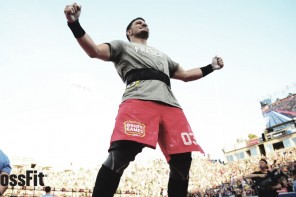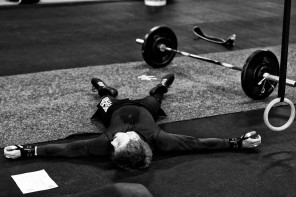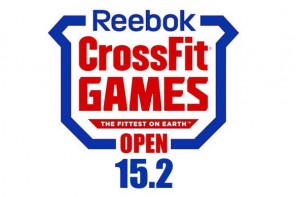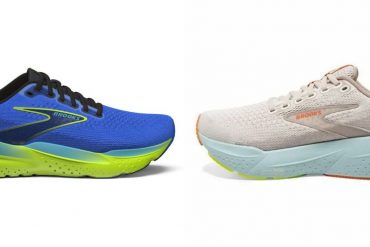Injuries can occur as a result of any high intensity sports or activities. With a sport such as Crossfit where we are constantly pushing our bodies to their limits, injuries can become a more common occurrence. It’s important to understand how injuries can occur, common injury signs and what to do if an injury does occur. I’ve enlisted the help of Rob Crowley, a passionate Crossfitter and practising chiropractor to understand more about the mechanics behind injuries in Crossfit.
Rob, an instructor for RockTape, a practising chiropractor runs a clinic from CrossFit Gain in Norwich, UK. He also serves on the athlete services team at the Reebok CrossFit Games Regionals in Denmark. By running a clinic from a box Rob benefits from having a direct line of communication with coaches at all phases of the treatment of CrossFit injuries. He also has a very impressive beard.
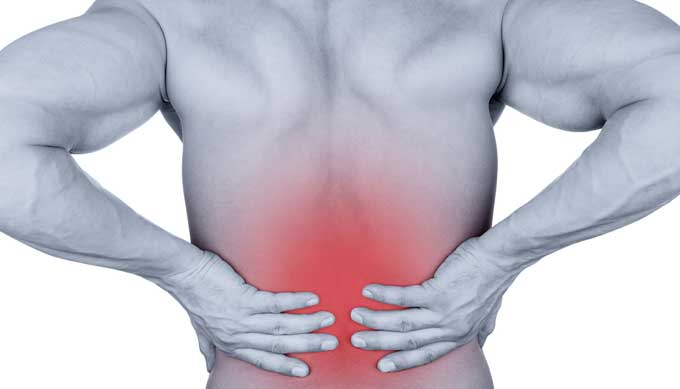
Common CrossFit Injuries
The most common CrossFit injuries I come across are injuries to the lower back and shoulder.
CrossFit Back Injury
The most common lower back injuries are lumbar disc bulges/protrusion, facet sprains, and sacro-iliac joint sprains.
Discs of the spine between each vertebra consist of rings of cartilage with a gel like centre that help distribute stress and compressive forces throughout the spine. Lumbar disc injuries develop over time and are rarely due to one specific incident. They are typically repetitive strain injuries due to repeated flexion, lateral bending, or rotation of the lumbar spine, especially without a neutral spine or under heavy load.
The lumbar facets are cartilage covered joints at the posterior aspect of the vertebra. They come under load with the spine in extension as the joint can become jammed causing the cartilage to tear and become inflamed.
The sacro-iliac joints are another cartilage covered joint that links the ileum of the pelvis to the triangular shaped bone at the base of the spine. This joint is injured due to lack of stability or balance of the glutes, erector spinae, and abdominal musculature.
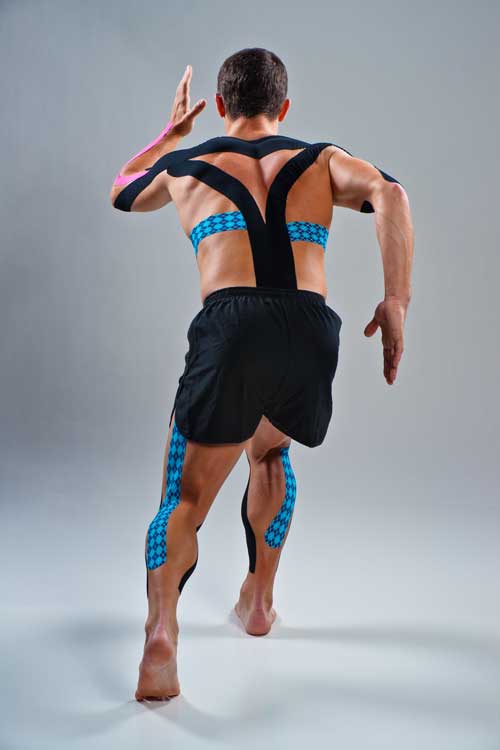
Crossfit Shoulder Injury
The shoulder is a commonly injured joint in CrossFit, mainly due to lack of scapular stability. The most common shoulder injury is rotator cuff tendonitis of the supraspinatus tendon. The supraspinatus tendon originates posteriorly at the top of the scapula and inserts at the anterolateral part of the humerus (upper arm bone). During the day many of us are slumped over computers, I pads, and smartphones. The job of the rotator cuff musculature is to keep our humerus centred in the shoulder joint. With this forward posture our rotator cuff muscles fatigue, once these fatigued muscles are placed in a loaded overhead movement such as a jerk or snatch the supraspinatus can develop micro-tears. The body then lays down scar tissue which is less flexible and prone to injury. Also, improper posture leads to difficulty in obtaining thoracic spine flexion which causes an athlete to attempt even more motion in the shoulder and these tissues eventually breakdown. As Kelly Starrett DPT says, “If you are lacking motion somewhere, your body will go somewhere to find it.”
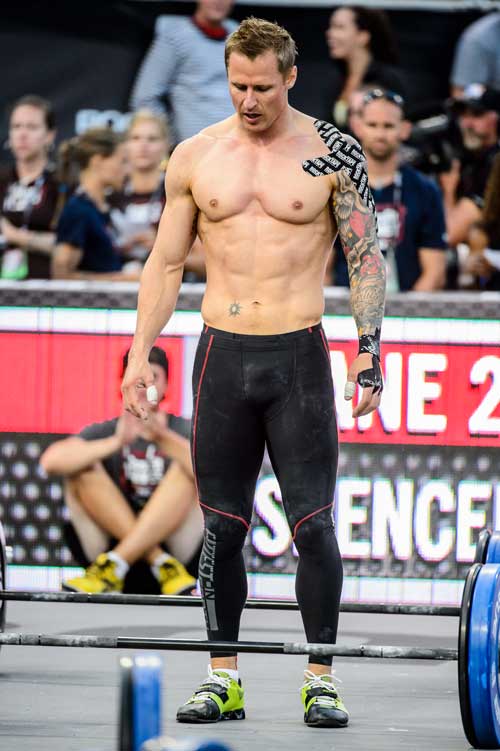
Injury Causes….Injury signs….and how to avoid them
The biggest cause of injuries are either abnormal stress to normal tissue or normal stress to abnormal tissue.
The most common sources of abnormal stress is either going too heavy too soon, over-training, or performing a movement they are not ready for such as muscle ups, handstands, or kipping pull-ups.
I see many CrossFit athletes trying to emulate the programs of top athletes thinking that they can handle the volume that Rich Froning and Sam Briggs can handle. It typically takes years to handle this kind of volume. Excessive volume leads to breakdown of the tissues which can lead to over-training and ultimately injuries. An athlete needs to slowly build up their training and periodise. Know when to go hard, pull it back, and take a rest. Some signs of over-training are excessive soreness, tiredness, insomnia, increased resting heart rate, and decrease in performance. If your body needs a break it will get one, in the form of an injury.
Many people get caught up in always having to obtain PBs, this can lead to injuries if form is sacrificed. At times PBs come thick and fast and sometimes they can come on slower. At times you need to take a step back, work on technique and mobility. You are only competing against yourself.
It has become a badge of honour to “suck it up” and push through the pain. Many come into CrossFit with mobility/stability issues or chronic injuries such as knee, lower back, shoulder, etc. When an athlete subjects these abnormal tissues under load or fatigue during a WOD, further injury is inevitable.
Kelly Starrett, DPT has done an excellent job of educating CrossFitters on mobility exercises, proper self-care, and technique. Mobility is important, but in order to have proper mobility, stability must come first. A joint lacks mobility typically because stability is lacking. Scapular and lumbo pelvic stability is crucial in order to obtain proper mobility. If stability is not obtained the athlete will always be chasing proper mobility and will be susceptible to injury.
Recovering From CrossFit Injuries
How soon after an injury before you start training again
It is difficult to say how quickly an athlete can return from injury, in general I am pretty aggressive in returning athletes form injury. It is however very important following an injury for the athlete to see the appropriate professional for proper diagnosis. Private Chiropractors, Osteopaths, and Physiotherapists are trained to properly diagnose the injury and can refer to an orthopaedic consultant or imaging if necessary. Finding a professional who is familiar with CrossFit is important as they will understand the demands of the sport.
Many injuries can be worked around by modifying WODs. My clinic is inside a CrossFit box allowing me to communicate directly with the coach to scale the workout appropriately for the patient’s injury. I also, have my patient’s work on the appropriate stability and mobility exercises in order to correct the biomechanical issues which lead to the injury in the first place.
What’s to do when you experience an injury
The first thing an athlete should do when injured is stop and tell their coach. If a fracture or other serious injury is suspected a trip to A&E may be in order. Ice the area of concern 10-20 minutes at a time for the first 48 hours. RockTape kinesiology tape can help decrease inflammation and pain. If the injury worsens or does not improve consult the appropriate medical professional. Ice has been a little bit controversial as of late, but I still consider it the first line of defence in the first 48 hours after an injury.
What’s the most effective way of speeding up recovery?
The most effective way to speed up recovery is to rest the injured area and get the appropriate diagnosis and treatment. It’s always easier to treat an injury in its early stages, the longer you leave an injury the more difficult it can be to treat. I do find CrossFit athletes recover a lot quicker than the average patient due to their diligence with rehab and higher health status as the result of training and nutrition.
Treatment from a chiropractor, osteopath, or physiotherapist may include manipulation, soft-tissue work, kinesiology taping, and rehabilitative exercise. The professional should also have a plan to modify training as not to aggravate the injury. I tend to not take the athlete out of training completely, the sense of community CrossFit provides can be a motivating factor in obtaining full recovery. It is crucial to correct the biomechanical abnormalities that caused the injury or the result of the injury itself.
Proper nutrition can also aid in recovery, Omega 3 fatty acids and adequate protein intake can speed up the recovery process of an athlete. The correct balance of Omega 3 and Omega 6 can have an anti-inflammatory effect and supplementing with a good quality glucosamine supplement such as GLC 2000 can provide the nutrients necessary for production of cartilage.
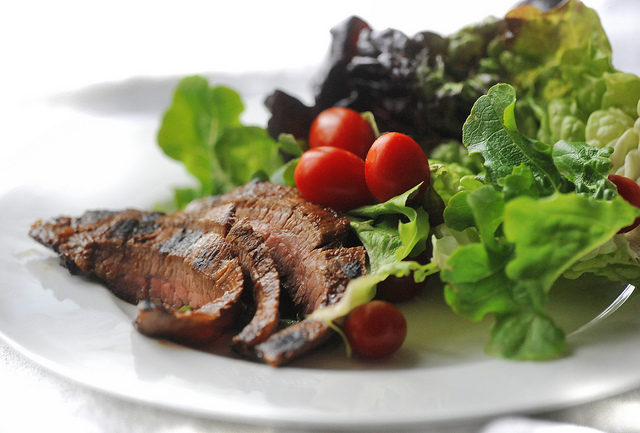
Protection when returning to training post injury
Rocktape along with various braces and supports can help protect certain joints. RockTape, a premium brand of kinesiology tape can help decrease pain, inflammation, help achieve improved biomechanics, and enhance certain postures. I served on the Athlete’s Services Team at the 2014 Crossfit Regionals in Copenhagen providing treatment for the athletes. Many athletes would get taped before each workout either due to injuries or to aid in performance. Kinesiology tape provides a lifting effect on the skin in order to increase circulation and take pressure off of pain and pressure receptors under the skin. It also provides a neurosensory stimulation to help improve proprioception (joint position sense), and improve gliding of the muscles under the skin.
Knee sleeves such as RockTape Knee Caps or Rehband can help keep the knee joint warm and help the athlete feel a bit more secure especially when lifting heavy weights. Wrist wraps can provide a bit of support to the wrist during overhead lifting and confidence in the front rack position. Weight lifting belts help engage the core musculature by increasing intra- abdominal pressure in order to provide support to the lumbar spine during heavy lifts. Lifting shoes allow an athlete lacking ankle dorsiflexion to squat a bit deeper as well as provide a solid base of support to push off of in whilst squatting or Olympic lifting. RockTape also has RockGuards which can protect the shin during rope climbs or box jumps.
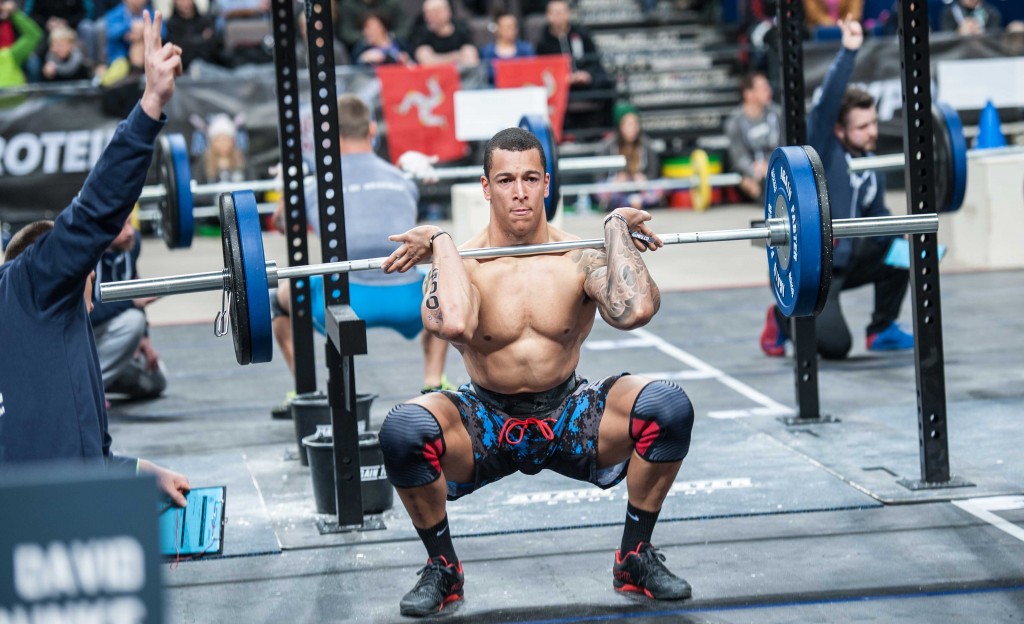
What’s the biggest mistake you see athletes make once they’re injured or when returning?
The biggest mistakes I see athletes make when returning from an injury is doing too much too soon, not correcting the form that lead to the injury, or not continuing with the stability/ mobility exercises post-injury.
Many athletes don’t get the proper care to correct the biomechanical problem that led to the injury. Pain is usually the last thing to show up and the first thing to go and it is usually the result of an underlying biomechanical issue. Many think of pain as dysfunction. Pain is function because the body is telling you something is wrong and tissue is being damaged. The victim always screams, the criminal never does.

